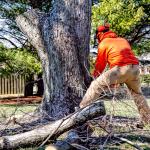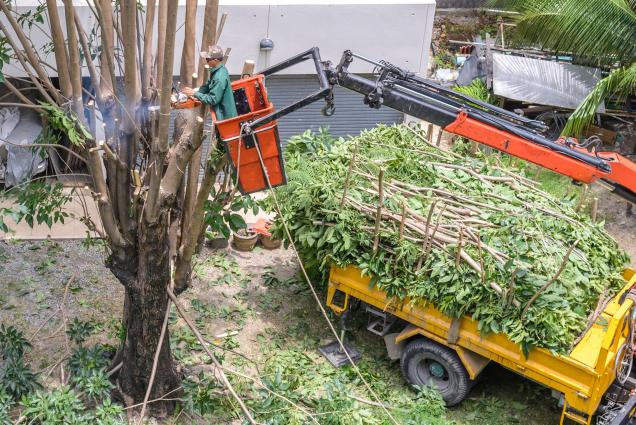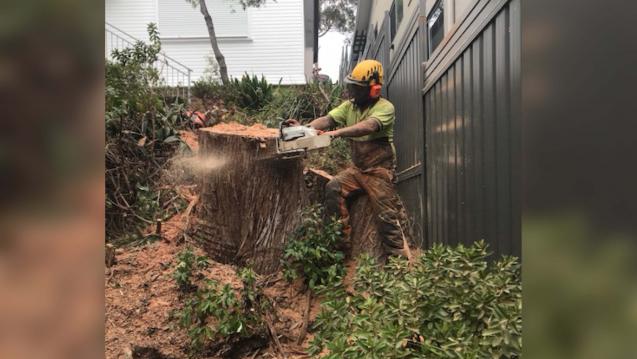
The Environmental Impact: Comparing Tree Pruning and Tree Removal
By Wolf Trees and Gardens|January 22, 2024
Trees are essentially the lungs of our planet, silently contributing to its overall well-being. However, at times, it becomes necessary to interfere with their growth, either through pruning or removal, and these actions can have a significant environmental impact. Understanding these impacts and the factors that influence them is critical to maintaining an environmentally conscious approach to tree management. This article explores the environmental impact of tree pruning and tree removal, two equally important yet contrasting facets of tree management. The relevance and advantages of this comparative study are rooted in the fact that it spreads awareness about responsible tree handling practices and their role in our ecological well-being.
Understanding Tree Pruning: Basics and Environmental Influence
Tree pruning, at its core, is the act of selectively trimming specific parts of a tree for its overall health, growth stimulation, or aesthetic appearance. The environmental benefits of tree pruning are manifold. It promotes the tree's health, thus extending its life and its ability to neaten our air.
However, improper tree pruning can have some serious adverse effects. It can leave trees vulnerable to infections, which not only pose a threat to the tree's existence but also disrupt the local biodiversity. To alleviate any adverse impact, it is recommended to practise smart pruning, ensuring that the cuts are clean, and the deformation is minimal.
Grasping Tree Removal: Fundamentals and Environmental Impact
Tree removal refers to the total uprooting of a tree. The reasons are generally to make way for construction, to remove dead or diseased trees, or as a measure against potential hazards during violent weather conditions. The environmental implications of tree removal are worth noting – it can contribute to soil erosion, destruction of habitats, and can affect local temperature and microclimate conditions.
Nonetheless, certain benefits exist, like the control of invasive species and the elimination of diseased trees that could infect others. The harmful results of tree removal can be mitigated through measures such as replanting and proper disposal of removed trees.
Comparative Analysis: Environmental Impact of Tree Pruning vs. Tree Removal
Evaluating the environmental impact of tree pruning and tree removal reveals that both practices can have short-term and long-term effects on the environment. The impact on the local ecosystem can vary drastically – while improper pruning can disrupt an ecosystem, the removal of a tree can completely dismantle it. Both contribute to global environmental issues, most notably climate change, but their severity ranges significantly.
Preventative Measures and Recommended Practices
This context reinforces the importance of comprehensive tree management services. These services offer guidance on appropriate pruning and removal methods to minimise environmental harm. They also underline the importance of eco-friendly policies that regulate tree management, and the role community initiatives can play in responsible tree management practices. Professional arborists specialise in this field and their expertise can significantly reduce the impact on our environment.
The Economic Perspective: Costs and Returns of Tree Pruning and Tree Removal
Beyond the environmental perspective, the economic impact of tree pruning and tree removal warrants discussion. When considering the costs and returns of each process, we find that the initial expenditures may vary significantly. While pruning requires less immediate investment, the long-term costs of improper management can be high. Comparatively, tree removal can be costly upfront but may offer more substantial returns in the long-run by removing potential threats to structures or other vegetation.
Conclusion
In summation, both tree pruning and tree removal carry a significant environmental weight, punctuated by a range of short-term and long-term impacts on local ecosystems and global environmental issues. It's pivotal that we approach tree management conscientiously to maintain the fine balance between man-made infrastructural advances and natural ecosystem preservation. Encouraging further study and understanding of these topics serves to reinforce how our personal choices can influence this balance, hence emphasising the significance of taking responsibility for the world we live in.
Understanding Tree Pruning: Basics and Environmental Influence
Tree pruning, at its core, is the act of selectively trimming specific parts of a tree for its overall health, growth stimulation, or aesthetic appearance. The environmental benefits of tree pruning are manifold. It promotes the tree's health, thus extending its life and its ability to neaten our air.
However, improper tree pruning can have some serious adverse effects. It can leave trees vulnerable to infections, which not only pose a threat to the tree's existence but also disrupt the local biodiversity. To alleviate any adverse impact, it is recommended to practise smart pruning, ensuring that the cuts are clean, and the deformation is minimal.
Grasping Tree Removal: Fundamentals and Environmental Impact
Tree removal refers to the total uprooting of a tree. The reasons are generally to make way for construction, to remove dead or diseased trees, or as a measure against potential hazards during violent weather conditions. The environmental implications of tree removal are worth noting – it can contribute to soil erosion, destruction of habitats, and can affect local temperature and microclimate conditions.
Nonetheless, certain benefits exist, like the control of invasive species and the elimination of diseased trees that could infect others. The harmful results of tree removal can be mitigated through measures such as replanting and proper disposal of removed trees.
Comparative Analysis: Environmental Impact of Tree Pruning vs. Tree Removal
Evaluating the environmental impact of tree pruning and tree removal reveals that both practices can have short-term and long-term effects on the environment. The impact on the local ecosystem can vary drastically – while improper pruning can disrupt an ecosystem, the removal of a tree can completely dismantle it. Both contribute to global environmental issues, most notably climate change, but their severity ranges significantly.
Preventative Measures and Recommended Practices
This context reinforces the importance of comprehensive tree management services. These services offer guidance on appropriate pruning and removal methods to minimise environmental harm. They also underline the importance of eco-friendly policies that regulate tree management, and the role community initiatives can play in responsible tree management practices. Professional arborists specialise in this field and their expertise can significantly reduce the impact on our environment.
The Economic Perspective: Costs and Returns of Tree Pruning and Tree Removal
Beyond the environmental perspective, the economic impact of tree pruning and tree removal warrants discussion. When considering the costs and returns of each process, we find that the initial expenditures may vary significantly. While pruning requires less immediate investment, the long-term costs of improper management can be high. Comparatively, tree removal can be costly upfront but may offer more substantial returns in the long-run by removing potential threats to structures or other vegetation.
Conclusion
In summation, both tree pruning and tree removal carry a significant environmental weight, punctuated by a range of short-term and long-term impacts on local ecosystems and global environmental issues. It's pivotal that we approach tree management conscientiously to maintain the fine balance between man-made infrastructural advances and natural ecosystem preservation. Encouraging further study and understanding of these topics serves to reinforce how our personal choices can influence this balance, hence emphasising the significance of taking responsibility for the world we live in.



